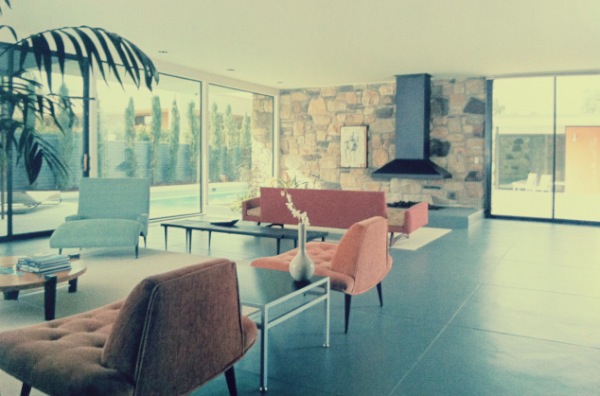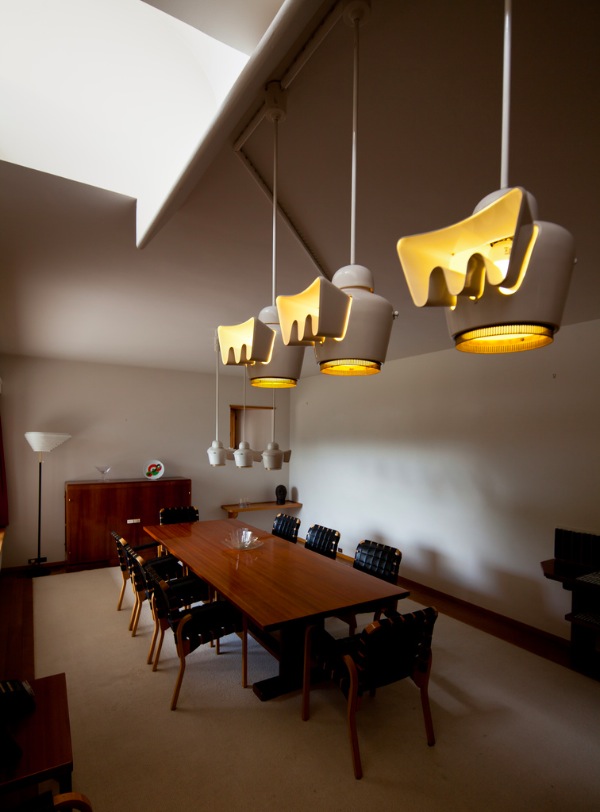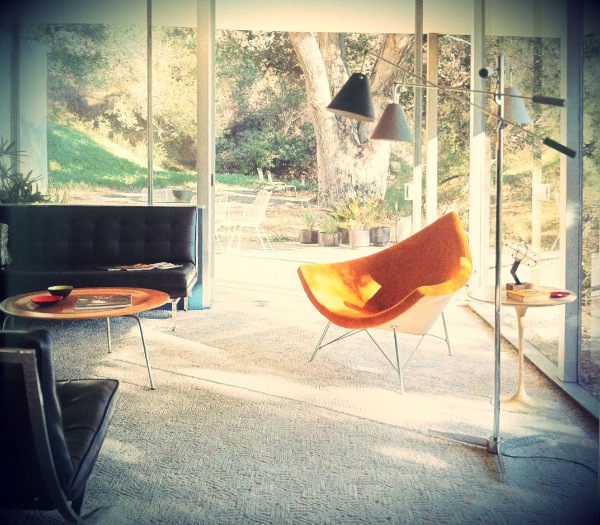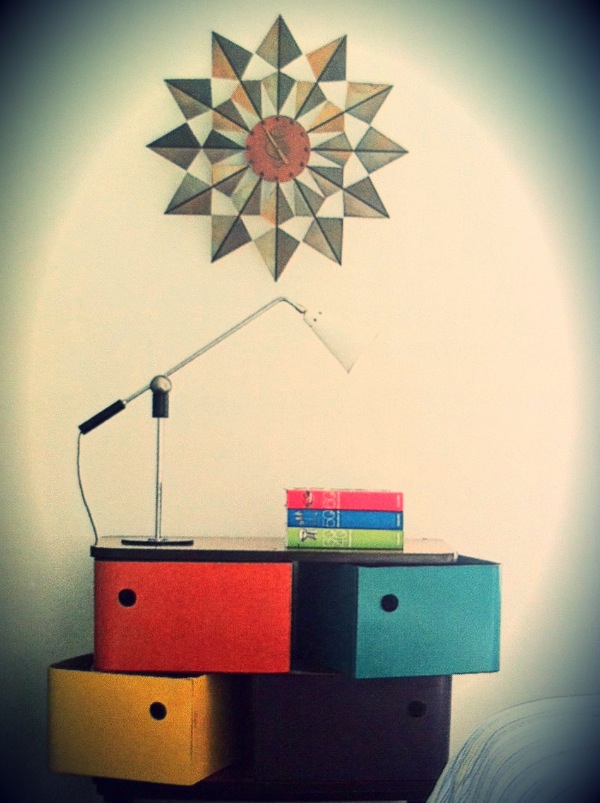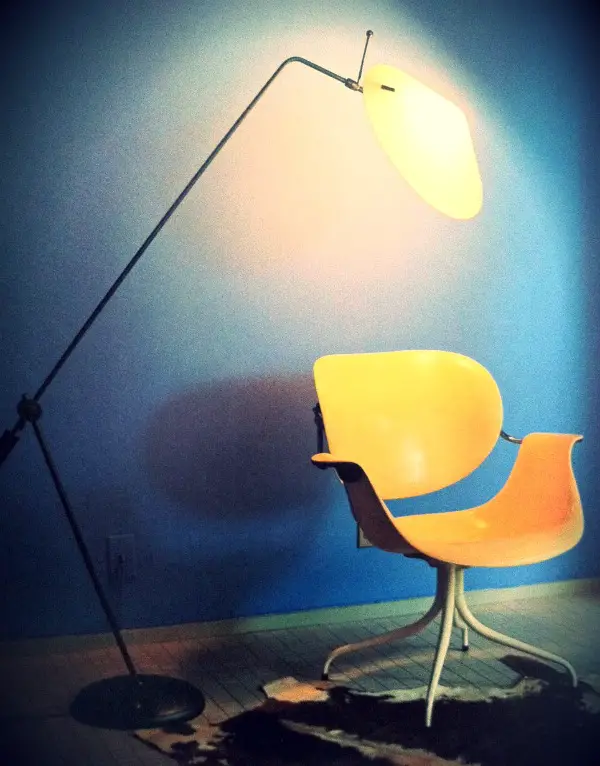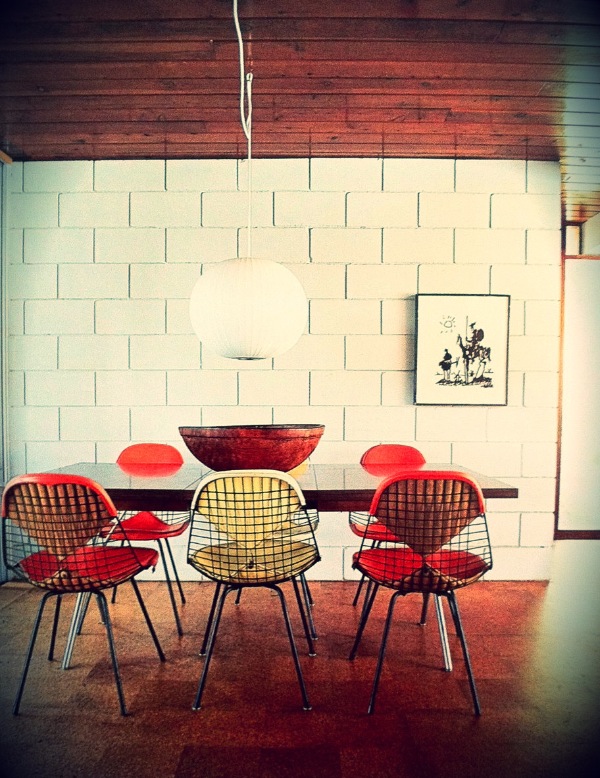Mid century designer Arne Jacobsen once said: ‘light gives all things their presence’. I absolutely agree with him as the right lighting can have dramatic effects on the interiors.
The floor open plan aids the light to pass through the home. It was one of the main factors that mid century architects considered when building 1950s homes.
Transparent doors, wide windows and angled ceilings made the house look brighter, taking full advantage of the natural light. Mid century architects proportioned and positioned the windows with respect to the space of the interior to illuminate so that the house lights up to its heart.
The combination of well proportioned windows and the open-plan maximized the natural light avoiding dark shadows and obscure corners.
As the light moved during the day across the room through the windows, it gave the interior a duality of weightlessness.
Clearly, both the natural as well as the artificial lights had major main role in the mid century interiors.
Similar to the Alvar Aalto Carre House, the mid century architects used pendant lamps, ceiling lamps or spotlights to extend the brilliance of the daylight throughout the day.
(photo by Darren Bradley)
On the other hand, floor lamps, table lamps and wall lights were mainly used to create the right atmosphere. The diffused lighting became popular during the mid century as ‘mood’ lighting.
The new mechanism of lamps and spotlights made them much more flexible enabling the beams to be turned or rotated by up to 360 degrees towards the needed area. Mid century lamps were designed to highlight paintings or direct the light over a work surface.
A Lighting For Every Need…A Material For Every Lighting.
The designs of the mid century lights were completely new.
They had streamlined designs that often resembled an industrial component. They were in metal and also the swivel bracket mounted on the ceiling or on the wall was part of the design itself. Spotlights, in particular, were often crafted with shining chrome, copper or glazed in harlequin colors.
Also, paper was used as a decorative element, especially for ceiling lamps which were available in many solid colors and covered with a variety of motifs.
Some ceiling lamps had arms coming out from a central axis, dispersing the glare in different directions with plastic-coated shades or enameled reflectors tempering the bulbs.
The majority of mid century ceiling lamps had etched, sandblasted or tinted glass shades to give them an opaque finish to screen the bulbs. The most common color for the glass shades was white, which matched easily with the north European houses’ ceiling color.
Furthermore, the edges of these shades either scrolled downwards or turned upwards towards the ceiling with the glass shells mounted in place with chrome plated caps to hide the screws. This sort of ceiling lamps looked more like rounded ventilation grates rather than light fixtures.
If metallic, the shades were decorated with clusters of tiny circles or a small star-burst shape to let the light pass through it. The ceiling pendant lamps could be lowered to eye level to light a surface while the simple pendants were usually rounded and crafted in smooth glass to give them the look of incandescent orbs or even constructed from curving panels.
Some of the most beautiful mid century light fittings were big frames fitted with four to twenty two lamps, making them closer to sculptures than chandeliers; sometimes floating from a double height ceiling.
Also, lanterns, like George Nelson’s Bubble lamps, were extremely popular during the mid century. For example, white lanterns capped in brass produced by the Swedish AteljéLyktan.
Like most of the mid century furniture, these specific type of lamps still look appealing today, probably because of their resemblance to the classical and iconic Chinese lanterns which have been produced since thousands of years.

